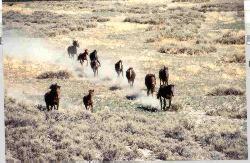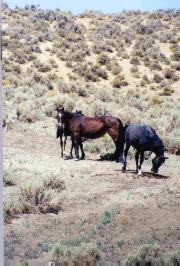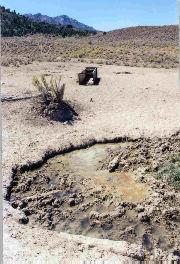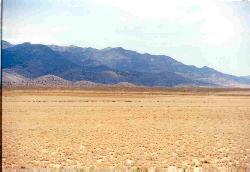|
|
 |
Emergency Gathers
Underway to Save Wild Horses and Burros
|
Severe drought conditions and recent wildfires
throughout the western United States have destroyed thousands of acres of
habitat for America's wild horses and burros, and the Bureau of Land Management
(BLM) is conducting emergency gathers to save as many of these animals as
possible.
"We are facing emergency
gathers of more than 4,000 animals," said Lee Delaney, Group Manager for
the BLM's Wild Horse and Burro program. "Some of the animals are in bad
shape and we need to rescue them as soon as possible."
Beyond the emergency gathers, BLM routinely
monitors the herds and removes animals when they begin to over populate their
herd area. These removals ensure the rangelands will remain healthy for the
remaining wild horses and burros, native wildlife, and permitted livestock.
|
 |
"BLM needs to find good homes for the 4,000
wild horses and burros we have in our corral facilities through the Bureau's
Adopt-A-Horse or Burro Program," added Delaney. "We need to find as
many good adopters as possible to make room for the animals that we will be
gathering from the emergency."
 |
To qualify to adopt a wild
mustang or burro, individuals must be at least 18 years old and have no
convictions for inhumane treatment of animals. Adopters also must have adequate
facilities, the financial means to care for the animal(s), and should have some
experience training or raising a horse or burro. A stock trailer will be
required to transport the animal(s). Qualified adopters can adopt up to four
animals. |
Mustangs make excellent riding stock, and properly
trained some adopted mustangs have become national champions in dressage,
snaffle bit competitions, trail, endurance, and jumping. The animals available
for adoption have been wormed and vaccinated and are in good health.
The process is called an "adoption"
because BLM retains title to the animal for one year after the adoption. During
the year, a BLM or designated representative could visit each adopter to ensure
the animal is being cared for and has a good home. During this time, adopters
cannot sell their adopted animal.
 |
After the first year, adopters
may apply for title. BLM will pass title of the animal if all the stipulations
of the adoption agreement have been met. The animal becomes the private
property of the adopter only after BLM transfers title, which completes the
adoption process. More than 175,000 animals have been placed in private homes
since the Adopt-A-Horse or Burro Program began in 1973. |
For more information about the Bureau's
Adopt-A-Horse or Burro Program call 1-866-4MUSTANGS or access the wild horse
and burro homepage at
www.wildhorseandburro.blm.gov.
|

